Boating Pet Safety
As with any day out on the water, safety is the primary concern. This goes for your pets, too! We want to make sure that everyone, even those with four legs, have a fun and safe day on the boat. So while you are getting ready to snap that awesome photo to share, keep these simple safety tips in mind:
-
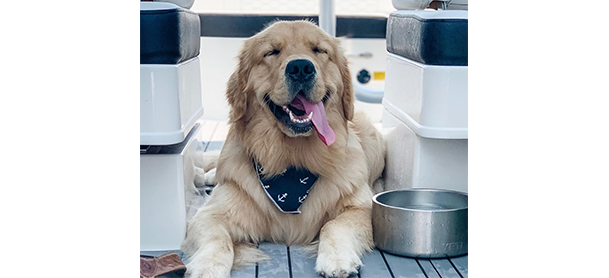 Your pets can't regulate their body temperature as well as we can, so it is important to make sure pets stay hydrated and don't overheat. Keep fresh drinking water available and a shady spot for them to get out of the sun if they need to.
Your pets can't regulate their body temperature as well as we can, so it is important to make sure pets stay hydrated and don't overheat. Keep fresh drinking water available and a shady spot for them to get out of the sun if they need to. -
 Keep decks cool. A hot deck can damage your pet's paw pads, so making sure there is a temperature regulated surface available. Even just hosing down the deck can save sensitive paws. If it is too hot for you to walk on barefoot, it is too hot for your pet.
Keep decks cool. A hot deck can damage your pet's paw pads, so making sure there is a temperature regulated surface available. Even just hosing down the deck can save sensitive paws. If it is too hot for you to walk on barefoot, it is too hot for your pet. -
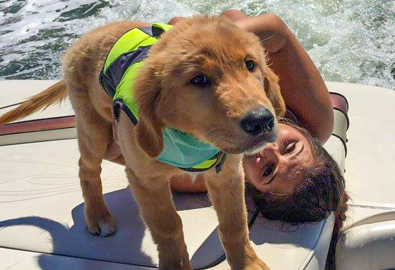 Having your pet fitted for a personal flotation device (PFD) can help keep them safe the same way that they do you! Even if your four-legged co-captain is a strong swimmer, panic and fatigue can quickly and unexpectedly set in. Getting a scared pet back in the boat can be a daunting task, and a life jacket with a handle on top can make this easier for you and your pet.
Having your pet fitted for a personal flotation device (PFD) can help keep them safe the same way that they do you! Even if your four-legged co-captain is a strong swimmer, panic and fatigue can quickly and unexpectedly set in. Getting a scared pet back in the boat can be a daunting task, and a life jacket with a handle on top can make this easier for you and your pet. -
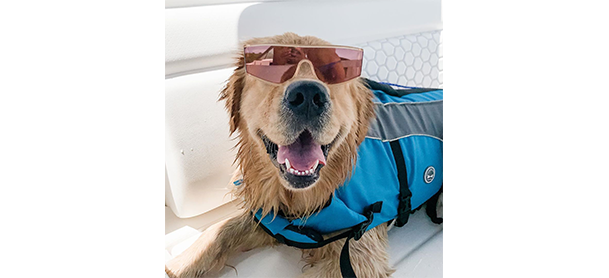 Pets can get seasick, too, especially if it is their first time out. Consult with your vet about the best motion sickness medicine for your pet and keep some on hand - just in case.
Pets can get seasick, too, especially if it is their first time out. Consult with your vet about the best motion sickness medicine for your pet and keep some on hand - just in case. -
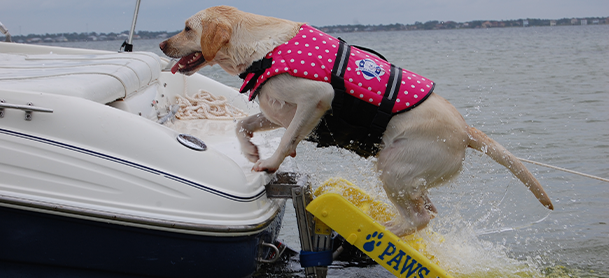 Start water training as early as possible. Whether you have a young pet or an older rescue, the sooner you get them used to your boat and teach them safety commands the better.
Start water training as early as possible. Whether you have a young pet or an older rescue, the sooner you get them used to your boat and teach them safety commands the better. -
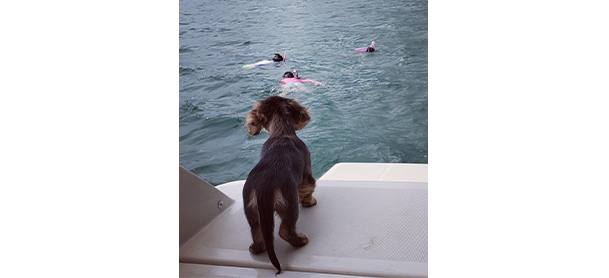 If you are travelling somewhere new on your boat, make sure any marinas, parks or beaches allow pets. And always keep a copy of your pet's vaccination certificates on board.
If you are travelling somewhere new on your boat, make sure any marinas, parks or beaches allow pets. And always keep a copy of your pet's vaccination certificates on board. -
 Make access easy. If you have a pet that needs extra steps or traction on the deck, make sure they have it. Most accidents happen when the boat is docked or anchored. Ensure your companion can easily get on and off your boat and won't slip when the boat is underway. Help your pet stay on board, not overboard!
Make access easy. If you have a pet that needs extra steps or traction on the deck, make sure they have it. Most accidents happen when the boat is docked or anchored. Ensure your companion can easily get on and off your boat and won't slip when the boat is underway. Help your pet stay on board, not overboard!

10 Tips for Boating with Pets
Follow these tips when boating with your pet for a safe and happy adventure on board.
View Now
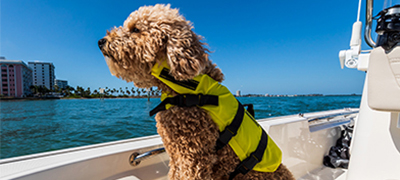
Pets On Board
Share what adventure your furry first mate is up to using #MMXPets!
Share Your Adventures
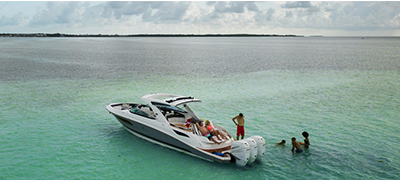
Dog Lifejackets
The right size and fit can be crucial when keeping your furry first mate safe.
Find Out More
